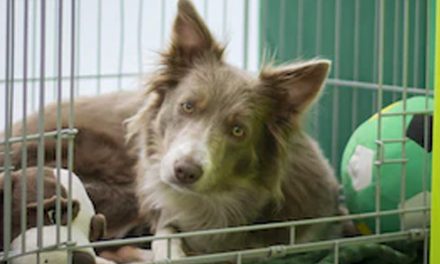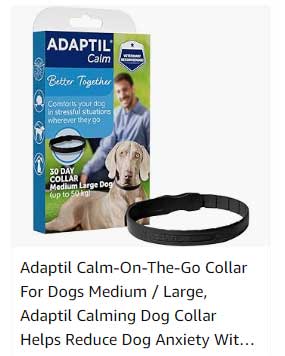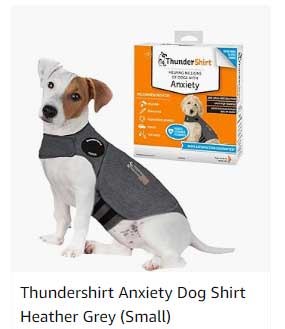Many believe that dog howling occurs when their owners leave the house or room without their four-legged friend.
The reason for this rational is that they believe their dog is feeling stressed, anxious and upset.
This is a very good assumption. but there could be other factors involved. Understanding dog behavior can be a challenge.
DOG HOWLING, CRYING AND BARKING
If you’ve ever come home to find your dog howling miserably, it’s possible your pet is experiencing separation anxiety.
This condition is fairly common in many breeds of dog, and often manifests when their owners leave them alone.
Separation Anxiety doesn’t truly manifest until 25-45 minutes after you have left, so view on a camera to see how truly bad it is…
In addition, your dog’s howling, crying and barking can be down to other factors, as part of changing dog behavior.

POSSIBLE HOWLING FACTORS
- Territorialism
- Being disturbed and unsettled
- Attention seeking
- Learned behaviours
- Frustration
- Seperation Anxiety
- Medical condition
- Plus much more…
SEPARATION ANXIETY HOWLING
Separation anxiety can be a cause of dog howling for long or short bursts of time.
It can also lead to destructive behaviour, braking excessively, accidental urinating and defecating indoors, attempting to escape/escaping, eating own excrement, pacing and being unable to settle.
But don’t despair there are solutions to changing dog behavior by understanding canine psychology.

WHAT TO DO IF YOUR DOG HAS SEPARATION ANXIETY
If you think your dog may be suffering from separation anxiety, there are a few things you can do to help ease their distress.
First, try to create a safe space where your dog can retreat to if feeling anxious.
Mat training is fantastic as a safe place for your dog to try to settle – try it!
You could try a crate, cozy snug bed or a small comfortable warming room with your dog’s favorite toys in easy reach.
All of the above mentioned will assist in resolving the erratic dog behavior, distress and anxiety.
Just remember to not tell off or raise your voice to your dog. It isn’t a dog problem, it’s anxiety that your dog is struggling to control and understand.
IDENTIFYING SEPARATION ANXIETY
The list below is identified as being signs of separation anxiety, however these signs could be as a result of something else.
If unsure seek professional help, guidance and support for dog behavior changes.
- Anxious as family member preparing to leave
- Excessive panting
- Unable to settle
- Very clingy with family members
- Stress yawning, shakes and licking of the nose, chops smacking
- Howling, whimpering and barking
- Over the top excessive upon family members return
- Trembling
- Toilet accidents
- Excessive salivation
- Circling repeatedly
- Being sick (vomiting)
- Not eating any food while you are away
- Licking of carpet/floor, paws, fur
- Chewing/nibbling on legs/paws
SEPARATION FOR LONG PERIODS OF TIME
You should try to avoid leaving your dog alone for long periods of time, if possible.
Giving your four-legged friend enough exercise during the day can help
With a little patience and understanding, you can help your domesticated dog overcome separation anxiety and enjoy a happy, stress-free life.
However, this isn’t always possible. You may need help and assistance from an expert for the abnormal dog behaviour.
So what if it can’t be avoided and long periods of time alone ends up happening; what can you do?

SUFFERING DOGS HOWL
There are a few things you can do to help reduce your dog’s separation anxiety, such as leaving them with a toy or treat, playing music for them, or using a pheromone diffuser.
KONG are a great solution to aiding recovery from anxiety, leading towards normal dog behavior. Buy your dog one now!
The KONG, if used correctly will give your dog something to focus on other than you having left the house and/or room.

MUSIC AND DIFFUSER FOR DOGS
Another thing you can do is play music for your beloved four-legged friend. Classical music is good!
This will help to distract your dog and to keep calm while you are away; resulting in less abnormal dog behaviour.
Why not compliment the music and KONG with a scientifically proven pheromone diffuser or DAP collar.
These release calming pheromones into the air that can help to reduce your dog’s anxiety.
PET SITTER/CARER FOR A HOWLING DOG
If your dog is still howling after trying the above techniques, you may want to consider hiring a pet sitter for while you are away.
A dog sitter can provide companionship and help reduce separation anxiety, stress and abnormal dog behaviour.
They can also take your dog for walks, play with them, and provide any other type of dog care that may be needed.
In addition, a dog sitter can give you peace of mind while you’re away from home, knowing that your dog is in good hands.
A TEMPORARY SOLUTION
If behavior modification and training techniques have failed to improve the situation, vets may need to prescribe medication to help ease the dog’s anxiety.
Medication is not a cure-all, but it can help some dogs to manage their separation anxiety and live more normal lives.
You could also try some supplements specially made for relaxing and calming your dog. However, this won’t fix the change in dog behavior.
HOME DOG TRAINING AND BEHAVIOUR SUPPORT
With the right dog support person, separation anxiety can be resolved with the help of an experienced dog trainer.
- You may also consider seeking the services of a qualified dog behaviourist, who could certainly resolve this; however, they aren’t cheap.
- Speak to your local vet as they can often put you in contact with a behaviourist or supply you with their details.
CAN SEPARATION ANXIETY IN DOGS BE CURED
Yes and no!
Every dog is different and there are also other factors involved including surroundings and stimuli – both positive and negative.
Scientific study suggests 8 out of 10 dogs suffer with separation anxiety
Some dogs can be fully cured; however, it can return. So be mindful to the possibility and try repeating what worked previously.
Other dogs can’t be totally cured, however making the right changes can help your dog to manage their separation anxiety.

WHAT NOT TO DO
Make sure not to raise your voice upon returning home to find damage, mess or something else – instead ignore and don’t make it a big deal.
By scolding your dog, you will only increase the anxiety and cause the problems to escalate and get worse.
Plus, you don’t want to impact the loving bond you have with your beloved companion.
Understanding dogs behaviour from dog habits and anxiety is a must. Patience is key.
ADAPTIL PROVEN SCIENTIFICALLY
Adaptil is scientifically proven to help reduce anxiety, leading to a calmer and settled dog.
Adaptil offers three fantastic solutions to help your dog:
- Adaptil Plugin
- Perfect for indoors, plugged in near to where your dog generally is when you leave.
- Adaptil Collar
- Perfect for indoors, car journeys and outside.
- Adaptil Spray
- Ideal for car journeys to help calm and settle your dog on short and long journeys.

ALL IN THE SCIENCE
Adaptil is highly recommended by many trainers and behaviorists around the world.
It is recommended as a good device to be used by several leading colleges and universities, including Nantwich University in the UK.
Adaptil products don’t fully get rid of anxiety, however they are believed to help to highly reduce it.
As a dog trainer I have seen firsthand the success Adaptil products have with dogs!
Lee Richards – Award Winning Dog Trainer
IS IT OKAY TO LEAVE A DOG WITH SEPARATION ANXIETY?
Yes, as long as it is safe to do so. Make sure your dog cannot escape, damage anything or hurt themselves.
Escaping dogs can get hurt – abnormal dog behavior + fear + anxiety.
Below are just some injuries they can gain while trying to get free to find their owner when stressed, panicking and anxious:
- Cuts
- Broken teeth
- Damaged nails
- Saw, scraped, cut paws
Better to be safe than sorry! Not to forget the damage that can be caused to belongings and your home.
RELATED ARTICLES
RECOMMENDED PRODUCTS FOR SEPARATION ANXIETY
- ADAPTIL Calm On-the-Go Collar, Medium/Large Dogs
- ADAPTIL Calming Pheromone Collar for Dogs, Small
- ADAPTIL Calm Home Diffuser with 30 day refill – comfort, calming & anxious dog, anti-stress, White
- ThunderShirt: Calming Jacket for Dogs, 5 sizes, Small/Medium Dogs
- ThunderShirt: Calming Jacket for Dogs, Large
- NutriPaw Calming Treats For Dogs – Stress, Fear, Separation Anxiety
- Petastical Hemp Oil for Dogs Chews – Dog Calming Aid Tablets for Anxiety Relief – Veterinarian Formulated – 60 Soft Chews
- KONG
RESOURCES
- Be Right Back!: How To Overcome Your Dog’s Separation Anxiety And Regain Your Freedom Paperback
- Separation Anxiety in Dogs: Discover How to Help Your Dog Overcome Separation Anxiety Paperback











